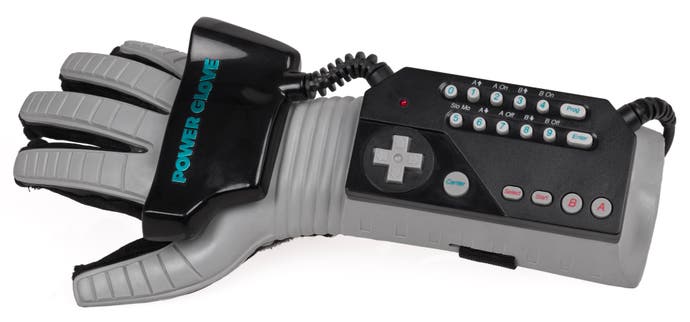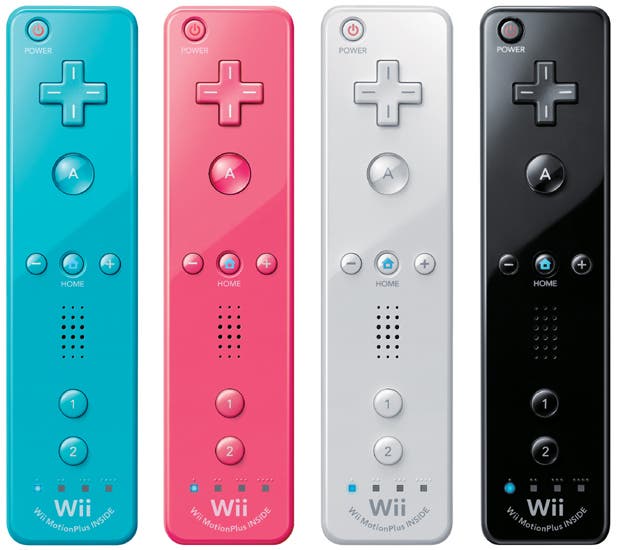The end of gimmicks?
Kinect's failure suggests a bright future for game hardware served straight - no chaser.
Microsoft's decision to make Kinect an optional - not to say redundant - part of the Xbox One experience this week is market positioning first and foremost. It's about taking one last step down from the high-concept high ground, rolling up those business-casual sleeves and doing battle where it really counts - on price. But it has a couple of very significant strategic ramifications nevertheless. It represents the end of a dream - maybe two dreams - that's been especially dear to Microsoft, but has been chased by every console manufacturer (and a few others besides) over the years, in one way or another. It also sounds a timely warning about the prospects of the latest gaming gimmick: virtual reality.

Tom has already written about how Kinect, after an explosive start, has simply failed as a new way to experience games. Later today on this site, Rich Leadbetter will explore how sidelining the device is a severe blow to Microsoft's "input one" media strategy, whereby Kinect would be used to control the TV - and the stereo, and probably the air conditioning - as well as the console.
The announcement of this vision last year was the moment the soldiers emerged from the Trojan horse the Xbox enterprise had always been, in the sense that it was Microsoft's long-term bid to step out of the office and take the living room. But instead of laying waste to the soft furnishings of our domestic Troy, Microsoft's metaphorical Greeks were met with indifference and derision - and are now to be spotted meekly climbing back aboard their horse, closing it up and pretending that a horse is all it was all along.

I'm jumping the gun a bit. Much of Microsoft's Xbox One media strategy isn't even in place yet, and could yet blow our socks off, with or without Kinect. And the dream of the "convergence" of games and other media in one-stop boxes is so broad and so long in the making - it began in earnest with Sony's decisive move to make the PlayStation 2 a DVD player, but had been present in various forms before that - that it will take just as long to die out.
Who needs anything at all plugged into input one when Netflix comes preloaded on your TV?
All the same, the fast, ubiquitous spread and low technical overhead of streaming media would seem to have dealt a killing blow to this corporate nirvana of consolidated entertainment. Who needs anything at all plugged into input one when Netflix comes preloaded on your TV? (And your phone, your tablet and probably your air conditioning unit, too.) Our access to media and digital entertainment has converged on the internet, but our access to the internet has diverged to every piece of technology we own.

Convergence wasn't the only component of the Kinect dream, however, nor even the first one. It was an answer to the rampant success of Nintendo's motion-controlled Wii and, more nobly, a genuine if over-reaching attempt to advance the human-computer interface for games and beyond. The reasons why it failed - and why PlayStation Move failed and even Wii ran out of steam - are well-established. Execution was lacking, ideas dried up fast, and all that was left was novelty value, with its inherently short half-life.
This is an even older game than convergence. The appeal of using new technologies, from Power Gloves to 3D TVs, to interface with games is as old as games themselves. Yet it is almost always short-lived. Input innovations that have had a massive and long-lasting impact on the video game artform have tended to be much more modest - the d-pad, the analogue stick - and they have served changes in games technology and design rather than dictating them. (Either that or they have been formed outside games and just happened to be well suited to them, like the mouse and the touchscreen.)

Take Nintendo's own attempt to follow the Wii with the Wii U's GamePad. It was a confusing proposition, if an on-trend one. (Microsoft and Sony must have been glad Nintendo went into dual screens first, allowing them to fail more quietly with SmartGlass and Remote Play.) But even Nintendo's masters of interface innovation haven't been able to come up with a killer application for the Game Pad. Aside from the Nintendo Land showcase, Wii U's best games, which are some of the best games anywhere, barely use the Game Pad's features at all and could have been made for any modern console.
It is a worrying sign for virtual reality, which companies as big as Sony and Facebook are betting on making a return from the grave it was left rotting in in the 1990s. The technology has certainly caught up with the vision and it's stimulating some exciting innovations in game design, as indie studios are proving with experiments like Classroom Aquatic and Alone. That was true of motion control, though. So was the surrounding, overwhelming and rather empty hype about putting you "inside the game", somewhere players with imaginations have been since the dawn of the medium. VR could well be the next big thing, but how long will it really last?

As the hardware arms race has slowed down and each generational advance in technology has offered diminishing returns to game designers and players - there is so very little a PS4 can do that a PS3 couldn't - it has been natural for the games hardware companies to turn to media convergence and control innovation to try to move things forward, to set their products apart, to convince consumers that games are vibrant and exciting, and not stagnating at all, and everyone really needs a box to play them on.
But that's just it - all of those things are still true regardless. Traditional gaming - by which I mean the sort that you and I enjoy, that requires a games console or good computer to participate in - doesn't have the hegemony it used to, but it's still a big and vivid business. Last year, Sony launched a very capable games console that was a worse media player than its forebear and it's selling like hot cakes. You can't get the same experience from a mobile or an Amazon Fire, and you certainly won't get it from streaming services like OnLive any time soon - if ever. Whether it's labelled as a PlayStation, Xbox, Nintendo, Windows PC, Steam machine or something else, the box that plugs into the screen that makes the games go and look great isn't going anywhere. Dedicated games hardware has has yet to go out of fashion. Games have yet to go out of fashion. It's only the gimmicks that have.

